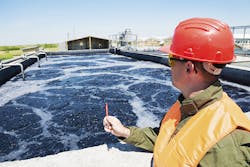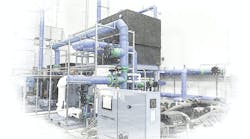The United States needs to invest $271 billion over the next five years to maintain and improve its wastewater infrastructure, according to a survey by the U.S. Environmental Protection Agency (EPA).
This includes improvements to the pipes that carry wastewater to treatment plants, the technology that treats the water and methods for managing stormwater runoff.
“The only way to have clean and reliable water is to have infrastructure that is up to the task,” said Joel Beauvais, the EPA’s acting deputy assistant administrator for water. “Our nation has made tremendous progress in modernizing our treatment plants and pipes in recent decades, but this survey tells us that a great deal of work remains.”
Infrastructure requirements identified by the survey include:
- Secondary wastewater treatment: $52.4 billion to meet secondary treatment standards. Secondary treatment uses biological processes to meet the minimum level of treatment required by law.Advanced wastewater treatment: $49.6 billion to provide upgrades so treatment plants can attain a higher level of treatment. Advanced treatment may also treat nonconventional or toxic pollutants such as nitrogen, phosphorus, ammonia or metals.
- Conveyance system repair: $51.2 billion to rehabilitate and repair conveyance systems.
- New conveyance systems: $44.5 billion to install new sewer collection systems, interceptor sewers and pumping stations.
- Combined sewer overflow correction: $48 billion to prevent periodic discharges of mixed stormwater and untreated wastewater during wet-weather events.
- Stormwater management programs: $19.2 billion to plan and implement structural and nonstructural measures to control polluted runoff from storm events.
- Recycled water distribution: $6.1 billion for conveyance and further treatment of wastewater for reuse.
Wastewater treatment has come a long way since the Clean Water Act was passed in 1972.
According to the EPA, between 1972 and 2012 the U.S. population receiving secondary treatment increased from about 75 million to 90 million, and the population receiving advanced treatment increased from 7.8 million to 127 million. Over the same period, the population receiving less-than-secondary treatment decreased from almost 60 million to 4.1 million.
This has resulted in dramatic improvements in the waterways receiving discharges from these treatment plants, the agency said.


